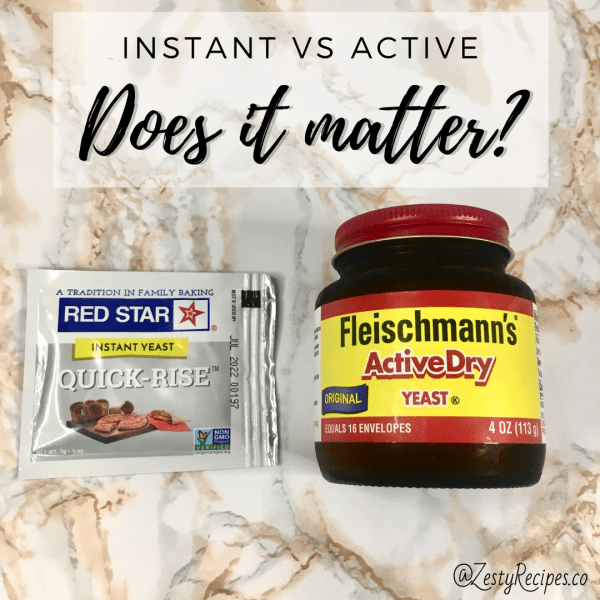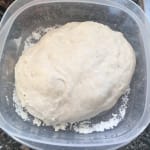You excitedly go to the supermarket thinking about the delicious loaf of bread that you’re going to make for dinner tonight. You head over to aisle 4: baking supplies to get some yeast and notice two types of yeast: Instant Dry Yeast and Active Dry Yeast.
Is there a difference in the yeast?
There is a difference between active and instant dry yeast. Active dry yeast needs to be activated by soaking in warm water (100-110°F/41-43°C) before mixing the dough. Instant dry yeast doesn’t need to be rehydrated and can be used as-is. Active dry yeast also takes longer than instant yeast for the dough to rise and isn’t as dramatic as instant dry yeast. Instant dry yeast is also known as Rapid Rise, Bread Machine, or Quick-Rise yeast.
Substitute Active Dry Yeast for Instant dry yeast?
You can use active dry yeast and instant dry yeast interchangeably, but if you use active dry yeast, remember to activate it before adding it to your dough mixture.
Active Dry Yeast
In the 1920s, active dry yeast was invented. The yeast is dried into granules and stays dormant until reactivated with warm water (105-110°F/41-43°C) for about 10 minutes. It can be stored at room temperature for months. If you go above 115°F, you risk killing the yeast and may end up with a flat and dense loaf.
The Better Version of Active Dry Yeast - Instant Dry Yeast
Instant Dry Yeast was introduced in the 1970s. It is the more favorable yeast by America’s Test Kitchen and King Arthur Baking as it doesn’t need to be activated before mixing the dough ingredients. Instant yeast also produced carbon dioxide more vigorously than active dry yeast. King Arthur Baking wrote an awesome blog post showing the differences in the rises for a loaf of bread.
But What’s Yeast?
Yeast is a single-celled fungus that is used as a leavener in bread to make it rise. There are many different types of yeast, but yeast used in baking and brewing is called Saccharomyces cerevisiae, also known as “brewer’s yeast” or “baker’s yeast.”
Yeast is added to a flour-water mixture and consumes sugar for energy. Flour naturally contains a small amount of sugar. Yeast breaks down the sugar to create carbon dioxide and alcohol that are trapped within the dough, causing the dough to grow during the fermentation period and the final rise. Carbon dioxide and alcohol are expelled from the dough when baked.
Storing leftover yeast
According to King Arthur Baking, yeast can be stored in the freezer for up to a year and sometimes longer. Frozen yeast can be used as-is without having to thaw. Just remember to activate Active Dry yeast first!
You can test if the yeast is alive before using it.
Test if Yeast is Alive
Stir 2¼ teaspoons of yeast into ¼ cup (70g) of warm water (105-110°F/41-43°C). Add 1 tsp sugar and let it stand for 10 minutes. If the mixture doubles in volume, yeast is active.
You can use this mixture in this simple homemade sandwich bread. Do not add any more water needed in the recipe since the yeast mixture already contains water.


 8-inch Tortillas
8-inch Tortillas
